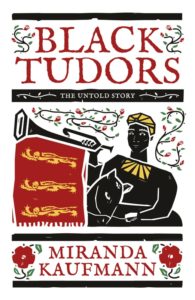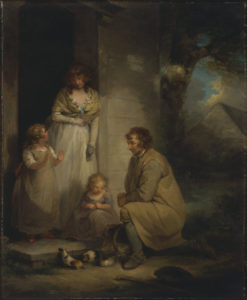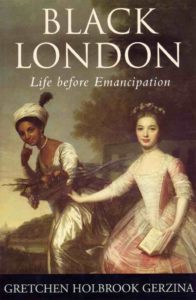Documentation! At long last. Every time I give a workshop about historical clothing, I get asked “what did they do when they had their periods”. And to date I’ve always had to say, I’ve never seen any documentation before the 1850s (rags and belts). But that there’s LOTS of theories out there, ranging from “they bleed onto their clothes” to “clouts” and “pessaries”. Well, today twitter has come through again. The lovely Sarah MaClean linked me to an amazing bit of research by Dr. Sara Read (I must now have all her books!!!) where Dr. Read goes into all kinds of depth about records of menstruation. I highly recommend everyone just read the whole thing themselves, cause it’s amazing, but for those who are uninclined, I’m going to hit some of the highlights of “Thy righteousness is but a menstrual clout: sanitary practices and prejudice in early modern England” here.
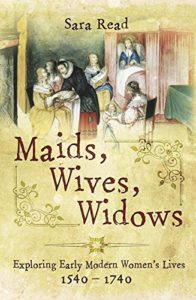
Dr. Read quotes from everything from Greek Mythology to the Bible to the poetry of the Earl of Rochester. She also covers Galen and my own personal favorite source, Aristotle’s Masterpiece. The best part, however, in my opinion are two smaller bits from the eighteenth century. Firstly, where physician Malcolm Flemyng is quoted as saying “some women have no symptoms to alert them to the start of a period, so that they ‘they scarce have warning enough to provide for decency.’” Which implies that women are doing SOMETHING (most other info indicates “clouts”). At least women of the middle class and upper class, because later there’s an amazing firsthand account from a trial where a working class woman makes it very clear that she’s freely bleeding onto her clothes, with the addition of an apron worn behind between her shift and petticoat to try and keep up appearances:
“In what might prove to be the only account of her menstrual practices by a woman in this period, the normality of bleeding into one’s shift is corroborated. In a notorious case in 1733, Sarah Malcolm was arrested for the murders of three women, one of whom had her neck slashed, the others having been strangled. Malcolm’s employer, John Kerrel, confronted her about the murders and testified:
‘The next Thing I took Notice of was a Bundle lying on the Ground; I asked her what it was, she said it was her Gown. And what’s in it says I. Why Linen, says she, that is not proper for Men to see; and so I did not offer to open it.’
A search of Kerrel’s house revealed that the handle of the “Close-stool” door was covered in blood, and the room itself contained some dirty linen and a silver tankard. Malcolm claimed that the tankard was her own, inherited from her mother, and that it and the door handle had blood on them because she had cut her finger “and as for the Linen, she said, it was not Blood upon it, but a Disorder.”
That this blood was menstrual was borne out by the testimony of a fellow prisoner, Roger Johnson, who claimed to have had orders to search Malcolm. He says that Malcolm asked him not to examine her: ‘she desir’d me to forbear searching under her Coats, because she was not in a Condition; and, to prove that she was menstruating, 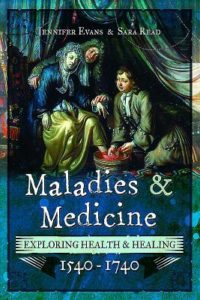 Malcolm “shew’d me her Shift, upon which I desisted.’
Malcolm “shew’d me her Shift, upon which I desisted.’
In an extremely important and unusual account of menstruation through a woman’s voice, Malcolm argues in her own defence: ‘Modesty might’ compel a Woman to conceal her own Secrets if Necessity did not oblige her to the contrary; and ’tis Necessity that obliges me to say, that what has been taken for the Blood of the murdered Person is nothing but the free Gift of Nature.
This was all that appeared on my Shift, and it was the same on my Apron, for I wore the Apron under me next to my Shift …. [A]nd Mr.Johnson who searched me in Newgate has sworn that he found my Linen in the like Condition.
If it is supposed that I kill’d her with my Cloaths on, my Apron indeed might be bloody, but how should the Blood come upon my Shift~ If I did it in my Shift, how should my Apron be bloody, or the back part of my Shift~ And whether I did it dress’d or undress’d, why was not the Neck and Sleeves of my Shift bloody as well as the lower Parts.’”
So there we have it. Basically everyone’s speculations are correct: clouts/rags, free-bleeding, there’s even some evidence in there for sponge tampons if you’re curious. For those of you writing US-set books, there’s also this dissertation shared with me by Emma Barry: Menstrual technology in the United States, 1854 to 1921 by Laura Klosterman Kid.


